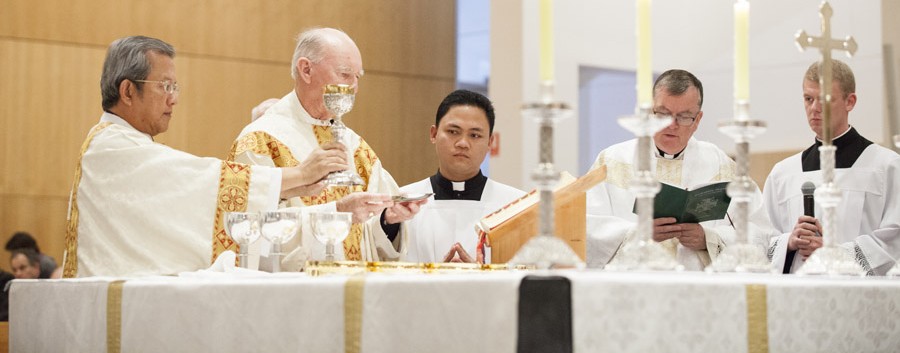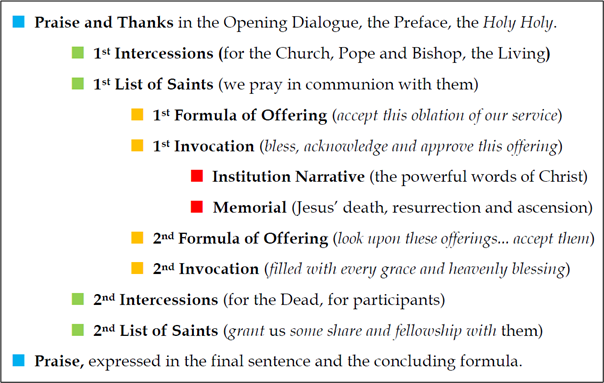The Eucharistic Prayer
National Liturgical Council

The Eucharistic Prayer belongs to everybody – even though it is voiced by the presiding priest, it is prayed by the whole assembled Church. That is why it begins with a dialogue between the priest and the people, all the people together sing the Holy Holy…, the Eucharistic Acclamation, and the final Great Amen. There are even more responses for the people included in the Children’s Eucharistic Prayers.
There is great variety available in the Eucharistic Prayers – we have 13 texts and over 80 different Prefaces. Apart from the main Prayers I-IV, there are two for Reconciliation, four for Various Needs and Occasions, and three for children.Sometimes people focus entirely on the central words of Jesus (the ‘institution narrative’) as the most important ‘words of consecration’, disregarding the rest as mere context. In fact, the consecration of the bread and wine occurs as a result of the whole Eucharistic Prayer because the invocation of the Holy Spirit and the link to the Paschal Mystery of the cross and resurrection are likewise key elements.
In addition, the prayer begins and ends with praise and thanksgiving to God – at the beginning, it encompasses the Preface, the Holy Holy… and the first part of what follows; at the end, the praise is centred on the final doxology and Amen. The invocation of the Holy Spirit is in two parts – first, the prayer asks that the bread and wine will be changed and, second, that the community will be united with Christ as his Body. Joined to the Lord’s Supper narrative is the memorial of Jesus’ death and resurrection which begins with the Eucharistic Acclamation. The offering which follows the memorial speaks of our participation in Christ’s saving act. Finally there are prayers of intercession (for the pope, the bishops, etc.). This structure is outlined and explained in the General Instruction of the Roman Missal, 79.

The most ancient of our Eucharistic Prayers is the first, the Roman Canon. It contains the same elements but they are arranged in a different way. Once again, it begins and ends with praise and thanks. The Institution Narrative and Memorial of Jesus’ death and resurrection sit at the centre. Then the intercessions, invocations and offerings are arranged symmetrically before and after.

This prayer is the high point of the Liturgy of the Eucharist. Christ entrusted to the Church this memorial of his death and resurrection: a sacrament of love, a sign of unity, a bond of charity, a paschal banquet in which Christ is eaten, the heart is filled with grace, and a pledge of future glory is given to us. The Church, therefore, earnestly desires that Christ’s faithful, when present at this mystery of faith, should not be there as strangers or silent spectators; on the contrary, through a good understanding of the rites and prayers, they should take part in the sacred service conscious of what they are doing, with devotion and full involvement (SC 47-48).
